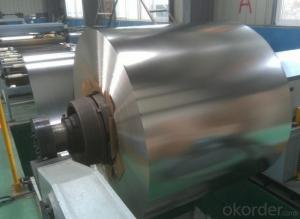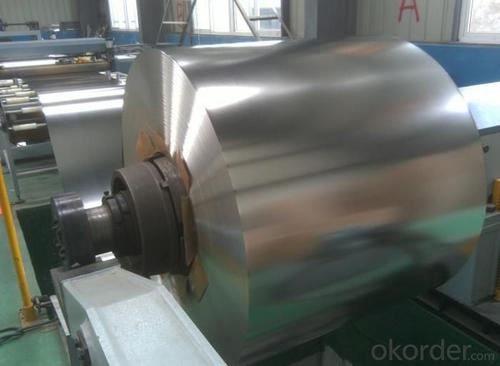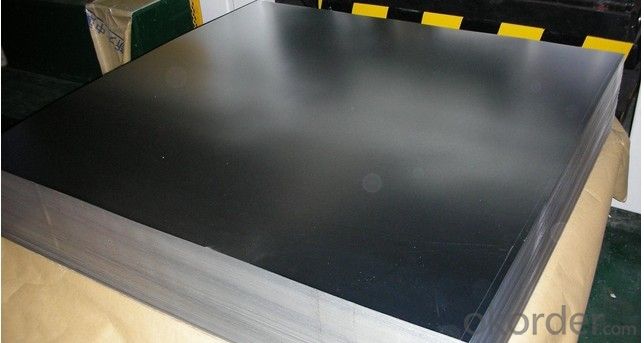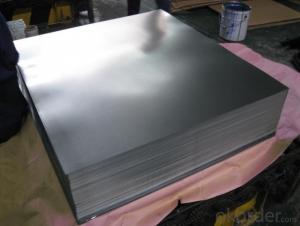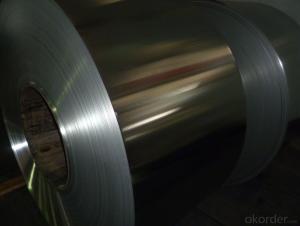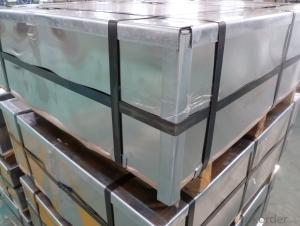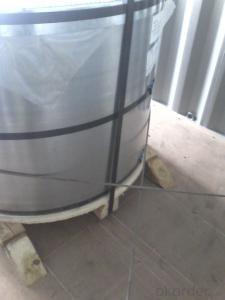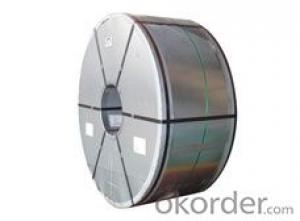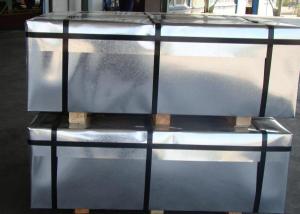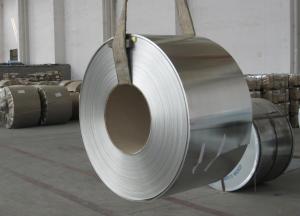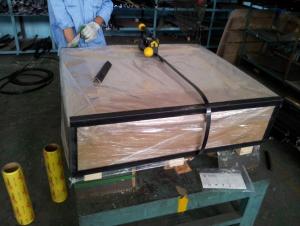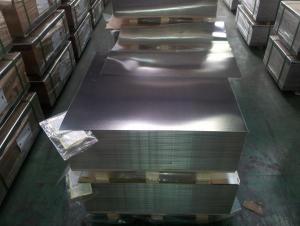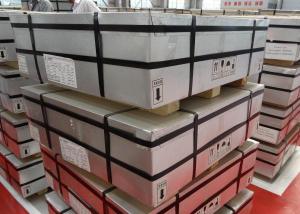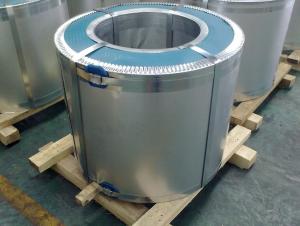PRIME Quality Tinplate ETP For Caps and Lids
- Loading Port:
- Tianjin
- Payment Terms:
- TT OR LC
- Min Order Qty:
- 100 m.t.
- Supply Capability:
- 40000 m.t./month
OKorder Service Pledge
OKorder Financial Service
You Might Also Like
Structure of PRIME Quality Tinplate ETP For Caps and Lids Description
| Steel Type | MR | ||
| Temper(BA&CA) | T1~T5, DR8, DR9 | ||
| Coating | 1.1~11.2g/m2 (Both Equal and Differential) | ||
| Thickness and tolerance | 0.15~0.50mm(Tolerance: _+0.01 mm) | ||
| Width & tolerance | 300~1000mm (Tolerance: 0~3mm) | ||
| Cut length & tolerance | 450~``50mm (Tolerance: 0~3mm ) | ||
| Coil inside diameter | 420/508mm | ||
| Coil Weight | 3~10 MT | ||
| Passivation | 311 | ||
| Oiling | DOS | ||
| Surface Finish | Bright, Stone, Silver, Matte | ||
| Packaging | Seaworthy Standard with wooden pallet | ||
| Standards Available | GB/T2520, JIS G3303, ASTM A623M & EN10202 | ||
| Special specitications are available on request. | |||
PRIME Quality Tinplate ETP For Caps and Lids China
Tinplate can ensure food hygiene and minimize the possibility of corruption, effectively
prevent the danger to health, but also in line with modern convenience in tinplate packaging
of canned food diet, rapid demand, tea packaging, coffee packaging, health careproduct
packaging, candy wrappers, cigarette packaging, gift packaging, food packaging containers
are preferred.As well as other miscellaneous cans of the oils and fats cans, chemicals
cans, beverage cans, spray cans, and and so on on.
PRIME Quality Tinplate ETP For Caps and Lids Images
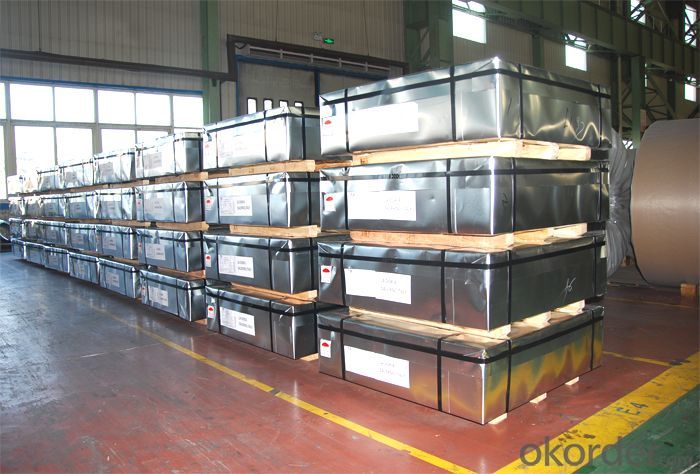
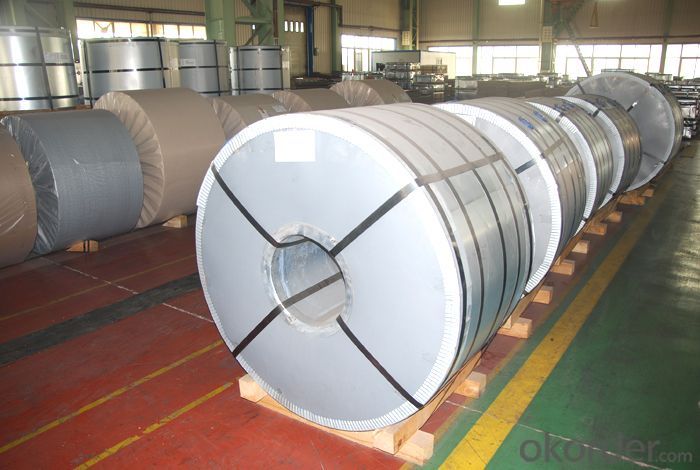
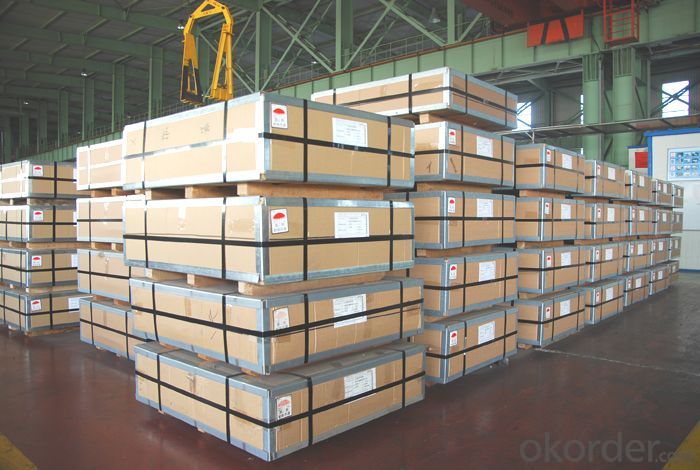
PRIME Quality Tinplate ETP For Caps and Lids Specification
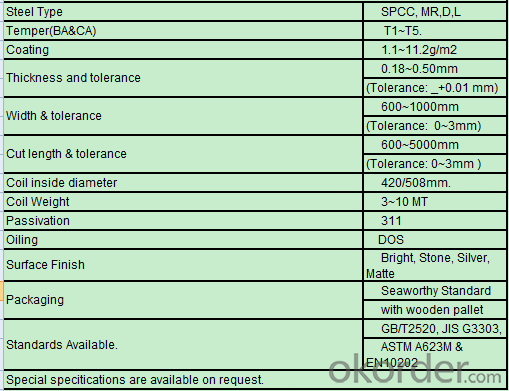
FAQ of PRIME Quality Tinplate ETP For Caps and Lids
How long does it take to get the product if i place an order?
With the process of your requirements,we will pack and deliver in 3-7 days.If it is by sea shipment,it will take 15-45 days depending on different locations.
- Q: How does tinplate contribute to the overall portability of packaging?
- Tinplate contributes to the overall portability of packaging due to its lightweight yet durable nature, making it easy to transport and handle. Additionally, its excellent resistance to corrosion and ability to preserve the quality of the packaged product ensures that packaging remains intact during transportation, further enhancing its portability.
- Q: Why do tin tins rust easily when they are opened?
- The tinplate is of poor quality and the tin is not enough
- Q: What are the common thicknesses of tinplate used for different applications?
- The common thicknesses of tinplate used for different applications can vary, but generally range from 0.13mm to 0.49mm. However, specific thickness requirements may depend on the intended use, such as packaging, electronics, or construction.
- Q: What is tin plate?
- Tinplate is a tin covered with tin, it is not easy to rust, also known as tin iron. Tinplate was most premature in Bohemia (now Czech and Slovakia). The land has been rich in metal since ancient times, advanced in technology, and know how to use water power in the manufacture of machinery, from fourteenth Century onwards began to produce tinplate. For a long time, it has been the main source of tinplate in the world. Tin was mainly used for making tableware and drinking utensils.
- Q: Can tinplate be used for furniture applications?
- Yes, tinplate can be used for furniture applications. It is a versatile material that offers durability and resistance to corrosion, making it suitable for various furniture components such as frames, panels, or decorative elements. Tinplate's malleability allows for intricate designs, while its smooth surface can be easily painted or coated to match any desired aesthetic.
- Q: What is the global demand for tinplate?
- The global demand for tinplate is significant and continuously growing. Tinplate is widely used in various industries such as packaging, electronics, automotive, and construction. Its corrosion resistance, durability, and versatility make it a preferred choice for packaging materials, especially in the food and beverage sector. With the increasing population and urbanization, the demand for tinplate is expected to further rise in the coming years, driven by factors like increasing consumer goods consumption and technological advancements.
- Q: What is the cost of tinplate?
- The cost of tinplate varies depending on factors such as the current market conditions, quality of the tinplate, and the quantity being purchased. It is recommended to check with suppliers or conduct market research for the most accurate and up-to-date pricing information.
- Q: Can tinplate be used for packaging pet care products?
- Yes, tinplate can be used for packaging pet care products. Tinplate is a durable and food-safe material that can effectively protect and preserve various products, including pet care items, such as pet food, treats, and grooming products. Additionally, tinplate packaging offers excellent resistance to corrosion and can be easily shaped and decorated to enhance product appeal.
- Q: What is the tin plated iron?
- Galvanized iron. Daily necessities with tin. Such as boxes, pipes, etc..Tinplate: tin plated iron. Generally used in food packaging. Canned goods.
- Q: How is tinplate coated with food-grade materials?
- Tinplate is coated with food-grade materials through a process called electrolytic tinplating. In this process, a thin layer of tin is electroplated onto the surface of the tinplate to provide a protective coating. This coating ensures that the tinplate is safe for direct contact with food and prevents any reaction between the metal and the food, thereby maintaining the food's quality and safety.
Send your message to us
PRIME Quality Tinplate ETP For Caps and Lids
- Loading Port:
- Tianjin
- Payment Terms:
- TT OR LC
- Min Order Qty:
- 100 m.t.
- Supply Capability:
- 40000 m.t./month
OKorder Service Pledge
OKorder Financial Service
Similar products
Hot products
Hot Searches
Related keywords
